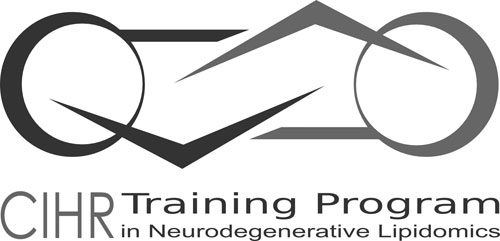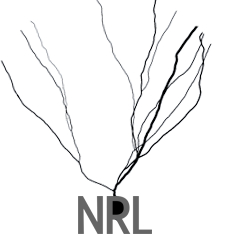a glycerophospholipid m/z prediction database
Developed by Graeme S.V. McDowell, Alexandre P. Blanchard and Nico Valenzuela
Version 3.2.0
What is VaLID?
“Visualization and phosphoLipid IDentification” (VaLID) is a web-based application linking a convenient search engine, a phospholipid database, and multiple visualization features for identification and dissemination of large-scale lipidomic datasets. Because the field of lipidomics is still in early stages, many mass to charges (m/z) values detected by rapidly evolving mass spectrometry (MS) protocols are not yet present in existing databases. Unlike other engines, VaLID returns all theoretically possible species based on m/z and user-defined MS conditions. While useful for lipid discovery, the user is cautioned that the database includes lipids (and bond configurations) that may not be biologically relevant or have not (or have yet to be) detected in biological samples. The experimenter is encouraged to mine these lists for the most relevant species in their particular biological system. To assist in decision-making, a “best prediction” feature is available whereby lipids listed in blue are predicted to be the most likely based on prevalence in mammalian cells (Miyazaki and Ntambi, 2008). Every species can be viewed in 2D and 3D. Many curated species detected in brain tissue by members of the CIHR Training Program in Neurodegenerative Lipidomics can also be downloaded in multiple high-resolution representations for further visualization and model production. VaLID follows the Lipid Maps classification and nomenclature system in lipid naming (Fahy et al., 2011).
References:
Fahy E, Cotter D, Sud M, Subramaniam S (2011) Lipid classification, structures and tools. Biochimica et Biophysica Acta 1811(11): 637-647.
Miyazaki M, Ntambi JM (2008) Fatty acid desaturation and chain elongation in mammals. In: Biochemistry of Lipids, Lipoproteins and Membranes (Vance DE, Vance JE, eds), pp 191-211. Oxford: Elsevier.
Getting started...
- I want to predict the potential identity of a lipid in my lipidomic dataset based on m/z. What do I do?
- I want to download high-resolution structures. What do I do?
- I want to search existing literature sources. How do I do that?
Predicting the potential identity of a lipid in your lipidomic dataset based on m/z
- Ionic Mass: Enter an m/z value in the mass input box. You can choose to use the exact mass or the average mass of the most abundant isotopic species.
- Chain Lengths: Limit your search to lipids with even numbers of carbons, odd numbers of carbons in their sn-1 and sn-2 chains or search all possible combinations.
- Mass Tolerance: Select the mass tolerance range appropriate to your mass spectrometer.
- Lipid Subclass: You can search within the following subclasses:
PA [GP10]: glycerophosphates
PPA [GP11]: glyceropyrophosphates
PC [GP01]: glycerophosphocholines
PE [GP02]: glycerophosphoethanolamines
PG [GP04]: glycerophosphoglycerols
PGP [GP05]: glycerophosphoglycerophosphates
PI and PIPX [GP06-09]: glycerophosphoinositols and glycerophosphoinositol mono-, bis- and tris-phosphates
PS [GP03]: glycerophosphoserines
CDP-DG [GP13]: cytidine 5'-diphosphate glycerols
- Fatty Chain Linkage: Choose all possible sn-1 and sn-2 linkages or limit your search to alkenyl-acyl, alkyl-acyl, diacyl, dialkyl, or lyso-lipids (with mono-acyl, alkyl, or alkenyl linkages).
- Ion: Select the appropriate ion type for your dataset.
- Click the Search button: This will prompt VaLID to search through its databases for the search terms specified in the above steps.
- Results: You will be provided with three lists:
Possible Lipids Include: Lists all computed possible chain length and linkage compositions.
Possible Isomeric Lipids Include: Lists the structural isomers at sn-1 and sn-2 positions for each species.
Possible Lipids Include: A second list labelled "Possible Lipids Include", this time containing a list of the the "Total Carbon" numbers - i.e., the headgroup followed by the total number of carbons in both sn-1 and sn-2 chains, and the total number of unsaturations - for each species in the above two lists.
-
Display All: The structures and all possible double bond placements of each species can be computed and displayed by highlighting the lipid of interest and choosing “Display all.” Each structure can be rotated in 2D by selecting and moving mouse/trackpad. Molecule name (default) and SMILES can be displayed on bottom left of each window by selecting these options in the Table menu. On a Mac computer, the structure can be rotated in 3D, multiple viewing options changed, and file exported by holding down the control button and clicking on the molecule.
-
Best Prediction: Lipids highlighted in blue in either list are predicted to be the most likely species based on prevalence in mammalian cells. Clicking on this button will display only these species.
-
Structural Representations: VaLID high-resolution models are provided for the lipids highlighted in red. Clicking on this button will display these models and allow you to save them to your own computer. The models are also available in list form by clicking on the Lipid Models tab. In addition to the options available at low resolution through the Display All tab, high-resolution images in Skeletal, Ball and stick, Space filling, and Valid view are available through the structural representations button for download. VaLID view is a flexible, polygonal mesh model that serves as a hybrid between a traditional molecular model and an organic or ‘biological approximation’. Generated using the 3D modeling software Autodesk Maya, these models can be assembled into more comprehensive and detailed three-dimensional representations of the lipid bilayer.

Downloading high-resolution structures (Skeletal, Ball and stick, Space filling, and VaLID view).
- If structure is found using the m/z prediction database, follow #11 above.
- Click on the Lipid Models tab and follow download instructions.
Using VaLID to search literature
With VaLID 3.2.0, we introduced the ability to search two external literature sources: PubMed and the Human Metabolome Database.
To use this feature, follow these steps:
- Search for the lipid of interest using VaLID (follow steps #1-8, above).
- Select the lipid of interest in either the Possible Lipids Include or the Possible Isomeric Lipids Include upper results fields.
- Press either the "PubMed Search" button, or the "HMDB Search" button.
Some points to keep in mind when using this feature:
- If clicking either buttons, but the search does not appear, check your pop-up blocker. Since these searches open a new tab or window, the search window might be blocked by the popup blocker. Enabling popups for VaLID will fix this issue.
- The search terms will change, depending upon which of the VaLID search boxes is selected. So make sure you select the proper sn-1/sn-2 orientation to search.






